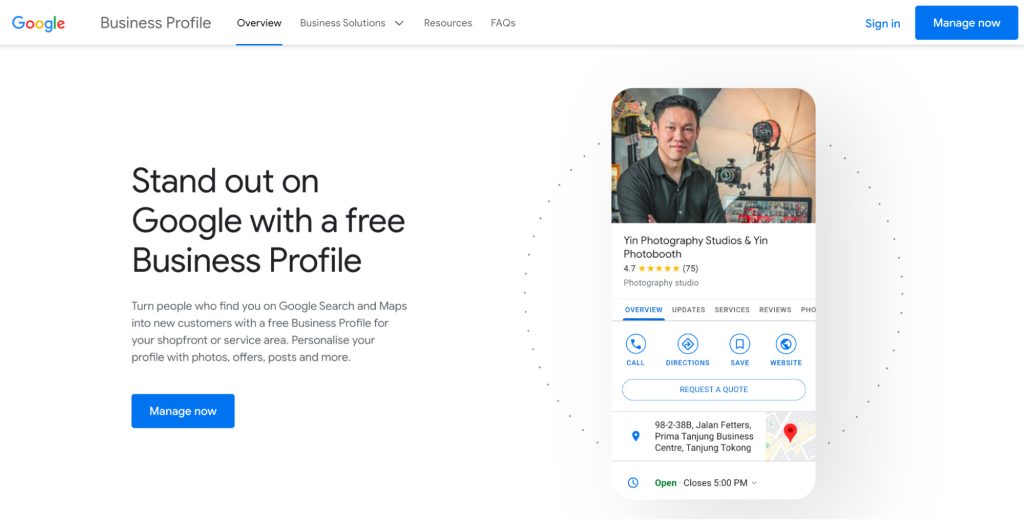In the dynamic world of online business, the pursuit of increasing organic traffic and improving search engine rankings is a perpetual challenge. Search Engine Optimisation (SEO) serves as the cornerstone of this endeavour, offering strategies and techniques to enhance a website’s visibility, attract relevant traffic, and ultimately drive business growth.
Let’s delve deeper into the essential SEO best practices to equip your website for success in the digital realm.
Understanding SEO Fundamentals
At its core, SEO revolves around optimising a website to align with search engine algorithms and user intent. By implementing effective SEO strategies, businesses can improve their online presence and reach their target audience more effectively.
Keyword Research and Optimisation
Identify the Right Keywords
Keywords are the bedrock of SEO, guiding users to relevant content. When selecting keywords, it’s essential to consider relevance, search volume, and competition.
Create Relevant and High-Quality Content
Content remains king in the realm of SEO. Engaging, informative, and high-quality content not only attracts users but also earns valuable backlinks. Focus on creating comprehensive guides, informative articles, engaging videos, and visually appealing infographics to cater to diverse audience preferences.
Optimise Content for Search Intent
Understanding search intent is crucial for creating content that resonates with users. Keywords in SEO are categorised into different types based on the intent behind the search query.
Informational keywords are used when a user seeks information, answers, or solutions to a question or problem. For instance, someone searching for “How to lose weight” is looking for information without the immediate intent to make a purchase. These users are often at the top of the sales funnel, which is in the research phase of their journey.
On the other hand, navigational keywords come into play when a user is looking for a specific website or page. Examples include “Facebook login” or “Nike official website.” These users already know what website they want to visit and use search engines for navigation rather than discovery.
Transactional keywords signal the user is ready to purchase or take a specific action. Keywords like “Buy Nike Air Max shoes” or “Discounted flights to Paris” indicate a user’s intent to complete a transaction. Users using transactional keywords are typically at the bottom of the sales funnel, ready to convert.
Investigational keywords are used by users conducting research with the intent to make a decision or purchase in the future. Examples include “Compare iPhone vs Samsung” or “Best hotels in Bali.” These users are in the consideration phase of the buyer’s journey, gathering information to compare options and read reviews before making a decision.
Understanding these different types of keywords is crucial for developing an effective SEO strategy. Tailoring your content and website structure to these different intents can help attract the right audience at each stage of their journey, leading to improved search engine visibility and higher chances of conversion.
Content Freshness and Updates
Search engines favour websites that regularly update their content. Fresh and updated content signals relevance and authority. Develop a content calendar to publish new articles regularly, update existing ones, and repurpose content to keep your website current and engaging.

On-Page Optimisation
Optimise Meta Tags
Meta tags, including title tags and meta descriptions, play a significant role in SEO. Craft compelling and concise meta tags that accurately describe the page’s content while incorporating targeted keywords. This helps improve click-through rates and signals to search engines about the page’s relevance.
Voice Search Optimisation
With the rise of voice assistants like Siri, Alexa, and Google Assistant, voice search optimisation is becoming crucial. Voice search queries are often conversational, so focus on creating natural-sounding content with long-tail keywords and FAQ sections.
Video and Image Optimisation
Visual content such as videos and images can significantly enhance user engagement and SEO. Optimise video content by providing descriptive titles, tags, and transcripts. For images, use descriptive filenames, alt text, and captions to improve accessibility and search engine visibility.

Technical Optimisation
Improve the Website Structure
A well-organised website structure enhances the user experience and search engine crawlers’ ability to index your site. Create a logical hierarchy with clear navigation menus, breadcrumbs, and internal linking. This helps users and search engines navigate your site efficiently.
Mobile-Friendly Design
With the majority of internet users accessing websites via mobile devices, having a mobile-friendly design is imperative. Ensure your website is responsive, with content and images adapting seamlessly to different screen sizes. Google’s mobile-first indexing prioritises mobile-friendly websites in search results.
Schema Markup
Schema markup is a powerful tool to enhance your website’s visibility in search results. It provides search engines with additional context about your content, such as reviews, ratings, events, and product variants. Implementing schema markup can result in rich snippets, which improve click-through rates and user engagement.
Website and Mobile Speed Optimisation
Website and mobile speed are critical factors in SEO and user experience. Pages that load quickly tend to rank higher in search results and keep users engaged. Ensure your website is optimised for speed by compressing images, using a content delivery network (CDN), and minimising unnecessary code.

HTTPS Security
Google gives preference to secure websites with HTTPS encryption. Ensure your website has an SSL certificate installed to encrypt data transmission and build trust with users. Secure websites are more likely to rank higher in search results.
Off-Page Optimisation
Build Quality Backlinks
Backlinks remain a vital ranking factor in SEO. Earning high-quality backlinks from authoritative and relevant websites demonstrates credibility and authority to search engines. Focus on natural link-building strategies, such as guest blogging, creating shareable content, and engaging with industry influencers.
Social Media Engagement
While not a direct ranking factor, social media presence and engagement can indirectly impact SEO. Active participation on social platforms helps amplify your content, attract more visitors, and earn social signals that contribute to search engine visibility.
Read more on the synergy of SEO and social media for marketing success in our article.
Local SEO Strategies
For businesses targeting local audiences, local SEO strategies are essential. Optimise your website for local keywords and Google Business Profile, and ensure consistent NAP (Name, Address, Phone Number) information across online directories. Local citations and reviews also play a significant role in local SEO.
Here are some guides on optimising your Google Business Profile:

Monitoring and Analysis
Regular SEO Audits
Conduct regular SEO audits to identify areas for improvement and track your website’s performance. Tools like Google Analytics , Google Search Console , and SEO platforms like Ahrefs and Semrush provide valuable insights into traffic, rankings, and user behaviour.
Performance Tracking
Monitor key performance indicators (KPIs) such as organic traffic, keyword rankings, click-through rates (CTR), and conversion rates. Analyse trends over time and adjust your SEO strategies accordingly to stay ahead of the competition.
User Engagement Metrics
User engagement metrics such as bounce rate, time on page, and pages per session provide insights into how visitors interact with your website. Aim to improve these metrics by enhancing content quality, improving website navigation, and creating compelling calls-to-action.
Conclusion
This comprehensive guide serves as a roadmap for businesses looking to navigate the complexities of SEO. By following these SEO best practices and staying abreast of industry trends, you can position your website for success, connect with your target audience, and unlock new opportunities for growth in the digital age.
For a deeper dive into optimisation strategies, don’t miss our SEO Quick-Win Strategies and How To Begin Ranking in Local Market articles! If you’re ready to take your SEO to the next level, reach out to our SEO consultants in Malaysia for personalised optimisation.






